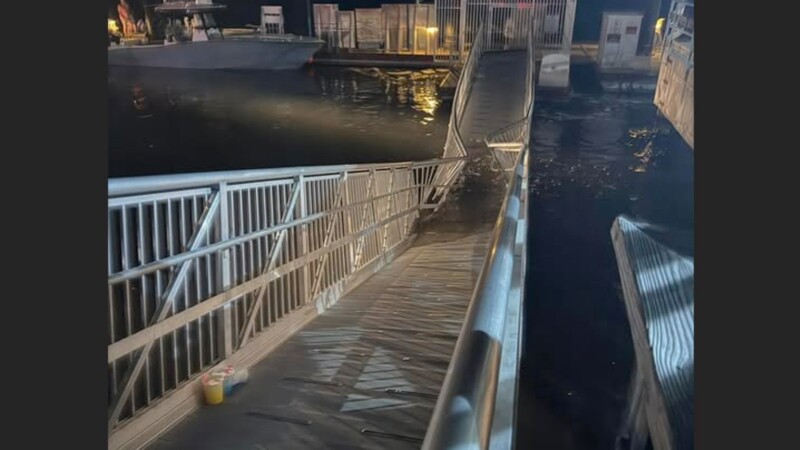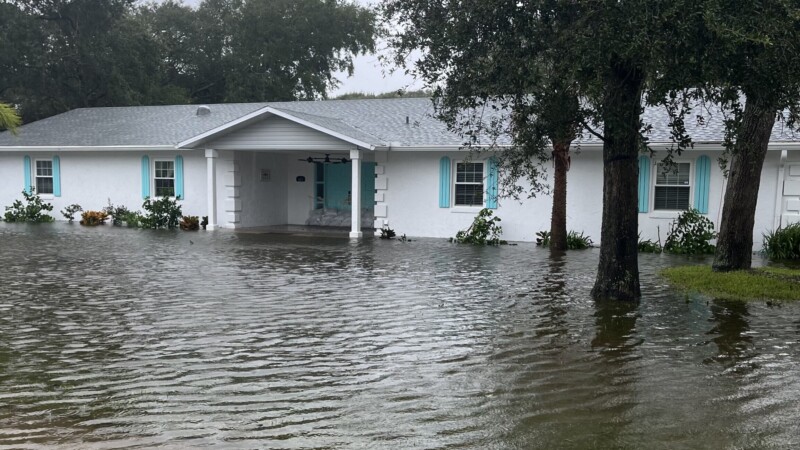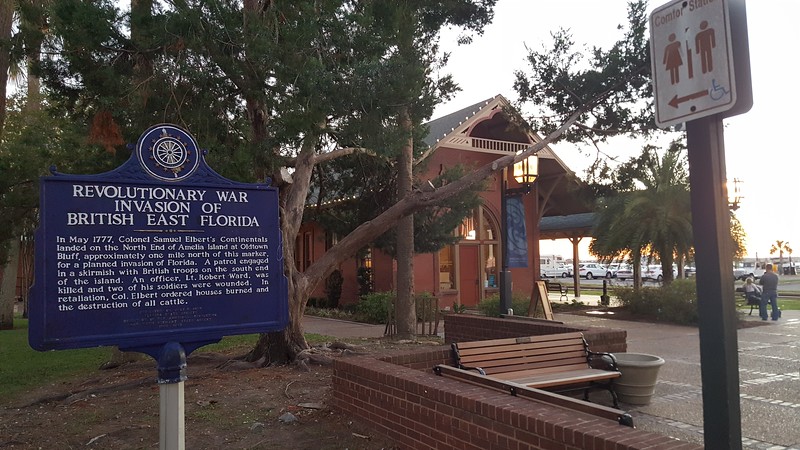
The City of Jacksonville owns hundreds of underused parcels across Downtown. While this has been an obstacle to revitalization, it’s also an opportunity: by selling off some properties and developing a long-term vision for others, the city can jumpstart efforts to give Jaxsons the Downtown they deserve. Here’s a look at a few key Downtown properties that, with a little vision, could serve as catalysts to boost Downtown’s vibrancy in the near future.
City-owned properties in Downtown Jax

Downtown revitalization remains a major focus for Jacksonville’s newly inaugurated mayor and city council, and fortunately, there are a number of common-sense ways to revive Downtown that won’t require huge amounts of money or time to have a major effect. Jacksonville’s new leaders have a golden opportunity to spark new life across Downtown by prioritizing key streets to concentrate new retail, by activating hidden retail that’s already present, and by focusing on the “Three C’s” – the clustering of complementing uses in a compact setting. Above all, chipping away at some of the obstacles holding Downtown back will help growth continue in both the short term and in the years to come.
The Downtown Investment Authority’s newly released master plan is a good start, but it doesn’t address one major issue: the long-term vision for city-owned properties. This is a problem as the city government owns large swaths of property across Downtown currently sitting underused and off the tax rolls. The Downtown Investment Authority lists 195 city-owned parcels in 86 clusters across Downtown, including the Downtown Northbank, the Southbank, LaVilla, Brooklyn and the Sports & Entertainment District. This list only includes property owned by the City of Jacksonville itself; it doesn’t include lands owned by agencies like JEA and the Jacksonville Transportation Authority or the state or federal governments.

All together, the City of Jacksonville owns 342 acres (.53 square miles) of land Downtown. Despite Downtown Jacksonville’s unusually large land area of 3.9 square miles (2,500 acres), COJ property accounts for a substantial 13.6% of Downtown’s total land area. Of course, much of that is in active use – it includes city offices, parks, and all of Downtown’s many amenities like EverBank Field, VyStar Arena, the baseball park, main library, museums and performance venues take up 161 acres of land (.25 square miles). But that leaves a lot of land on the city’s hands that’s not being actively used. This presents a challenge – but also an opportunity.
Disposing of vacant property

Discounting the occupied buildings, amenities and developed parks, the city owns 147 parcels of property across Downtown. These parcels include things like surface parking lots inefficient [parking craters, retention ponds, undeveloped park space like Lenny’s Lawn and simply vacant fields in the middle of Downtown. Altogether, these properties make up 182 acres, or .28 square miles.

This is a significant drain for the city; not only does dead space kill walkability and vibrancy by stretching out the distance between active uses that do exist, it’s keeping land off the tax rolls that could help fund the city’s needs. According to the DIA, the Duval County Property Appraiser assesses these properties at a value of $74 million. That means that even if the city simply gave all this land away, at the current millage rate of 17.0303, it would generate $1.26 million a year in property taxes, even if it remained undeveloped and unused.

Of course, not all of these properties should be disposed of (more on that in a minute). But in a number of cases, the properties would be better off in private hands, generating tax revenue and activity for Downtown. Take for instance the former Sax Seafood property in LaVilla. The City of Jacksonville took ownership in 2008 after the previous owner’s plans for a restaurant fell through. DIA has made overtures toward developing the land, and this needs to happen. It’s easily accessible to I-95 and located between State and Union Streets, two of Downtown’s busiest corridors, making it a prime candidate for redevelopment and a potential catalyst to redesign these streets from suburban-style arterials into walkable urban boulevards.
Other properties prime for return to the tax rolls include the Snyder Memorial Church in the Northbank (54), a cool historic structure on the popular Laura Street corridor; the old Railroad Row properties in LaVilla (11 and 12), located on busy Bay Street next to the Jacksonville Regional Transportation Center; and the stadium district’s lots V and Z (77), which sit at a strategic location on A. Philip Randolph Boulevard between ongoing developments nearby and the Eastside neighborhood to the north.
To see these properties redeveloped, all the city needs to do is issue open-ended Request for Proposals (RFPs) to see what potential buyers can come up with. In some cases, incentives may be necessary, but regardless, a sustainable development is better for Downtown than a vacant lot any day.
Properties to keep
In other cases, vacant properties would be perfect for helping the city realize some of its long term projects. In these cases, it would be helpful to have a comprehensive master plan identifying which projects will go to which specific sites, as well estimates of the cost and completion date. This will not only make it easier for the city to plan, it will allow those developing nearby blocks to coordinate their efforts with the city’s projects. Possibilities are endless, but some jump out as low-hanging fruit.
Resolving the convention center dilemma the easy way

One of the most pressing projects facing Downtown Jacksonville is what to do with the convention center. It’s long been recognized that the current Prime Osborn is too small and too far from anything else to be adequate. Previous attempts to build a new convention center have been derailed by lack of coordination and designs that are far too large and costly for Jacksonville’s market.
This is one case where simply developing a sustainable vision for city-owned property can resolve several of the city’s dilemmas at once. As we’ve argued before, Jacksonville could save a lot of money and time by building on assets that already exist rather than developing a new center from scratch. The Hyatt Regency Jacksonville Riverfront currently has many of the things a mid-sized convention center needs, including 951 rooms, 116,000 square feet of meeting space, 21,000 square feet of riverfront deck space and above all, a prime location in the heart of the Downtown Northbank.
The major thing the Hyatt lacks is a main exhibition hall. Fortunately, the City of Jacksonville is sitting on a parcel that could easily fit a 100,000-square-foot exhibition hall. The old City Hall Annex lot (x) is not only immediately adjacent to the Hyatt Regency, but Hyatt has right of first refusal over the land, meaning it’s unlikely anything else will be built there for many years. Building a new convention center doesn’t have to be a matter of spending hundreds of millions to start from scratch; it can be as simple as just expanding the Hyatt Regency’s existing facilities with a new exhibition hall right in the core of Downtown.
Bring passenger rail back to the Prime Osborn

But wait, there’s more! Developing the lot next to the Hyatt Regency would not only resolve Jacksonville’s convention center dilemma, it opens up a chance to fulfill another long term plan: restoring the current Prime Osborn Convention Center as a passenger train station. Ever since Amtrak moved out in the 1970s, city leaders have talked about restoring this historic asset to its historic use. It’s time to develop a vision including projected costs, funding sources and timeline for completion.
Time is of the essence here. Amtrak is already planning expansion, including additional routes for Jacksonville. Private regional rail company Brightline also includes a Jacksonville station in its future plans. With additional rail already in the works for Jacksonville, the city should do everything possible to make it happen at this vital city-owned property where it can help drive additional investment and activity for Downtown.
A new vision for MOSH’s current location

As the Museum of Science and History plans to move to a new location on the Northbank, the current property will be looking for a new use in the future. There are many ways to go about this: it could be sold to a private owner to adapt or replace, the city could use the asset for another Downtown cultural attraction. The latter would be preferable as Downtown and all of Jacksonville benefits by building on assets we already have.
At the very least, the city should at all costs avoid simply demolishing the building with no plan in place. Jacksonville has a terrible track record of going Godzilla on its own Downtown, which has left the city center pocked with empty lots that remain for years or decades. Instead of creating another waterfront crater, the city should start planning now for the future of the parcel, identifying future uses, costs and timelines for this space.
By strategically working through Jacksonville’s large catalog of Downtown properties, the city can prioritize which parcels should be disposed of to generate new growth, and also make public plans for the properties it plans to keep. Not only will this help put land back on the tax roles and provide a sense of urgency to make good on long-simmering plans, it’ll provide something Jacksonville hasn’t seen enough of: a roadmap that other property owners, builders and citizens can use to coordinate investment on surrounding blocks. It goes to show that it doesn’t take decades or massive “gamechanger” projects to create a more vibrant and welcoming space. Just like the trains that roll past the Prime Osborn everyday, a little coordination, vision and action can pull a lot of weight.
Editorial by Bill Delaney. Contact Bill at wdelaney@moderncities.com.







